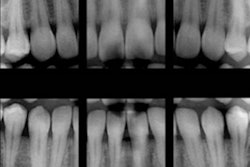
The District of Columbia and 14 U.S. states have passed laws encouraging children to get dental screenings before the school year. However, these laws struggle to have a measurable impact, according to a new report published just in time for Children's Dental Health Month.
The report details several trends that hinder the effectiveness of dental screening laws, including an inability for children to find permanent dental homes and a lack of data sharing between health and education departments. The Children's Dental Health Project (CDHP) published the report on January 31, which coincides with the beginning of Children's Dental Health Month on February 1.
 Eleanor Fleming, DDS, MPH, PhD.
Eleanor Fleming, DDS, MPH, PhD."State dental programs must have the mechanisms not only to have children screened but also to connect children in need to dental homes," stated report author Eleanor Fleming, DDS, MPH, PhD. "Dental homes become the permanent place where children can see dental providers for preventive services but also receive the restorative care that they need to treat disease."
The CDHP last evaluated state dental screening laws in 2008. Dr. Fleming, a dental public health resident at Boston University, wanted to know whether these laws effectively boosted the oral health of children.
Oral health stakeholders from states with and without dental screening laws discussed the laws' impact and the challenges to successful implementation. The stakeholders included individuals from state and local dental public health programs, school-based health programs, and an advocacy organization.
Below are five key takeaways from the report.
1. Kids with decay aren't seeing the dentist
Children in states with screening laws may be screened for dental diseases but that does not guarantee they see a dentist for treatment.
“State dental programs must have the mechanisms not only to have children screened but also to connect children in need to dental homes.”
For instance, dentists who conduct the screenings in one state cannot refer those children to their own private practice for care. Other states have many dentists who are uninterested in taking referrals, sometimes because of low Medicaid reimbursement rates.
"Without a reliable mechanism to connect children to care, these laws may not achieve the impact envisioned by advocates," Dr. Fleming wrote.
Connecting school nurses with Medicaid coordinators could help to partially resolve this issue, Dr. Fleming noted. However, not all schools have nurses on staff, and parents may still struggle to get their children to the dentist.
"If dental providers do not have the capacity in their practices to screen children, or if the Medicaid reimbursements are so low as to discourage them from serving as dental homes for kids from low-wage families, [dental screening law] advocates may want to address these issues prior to seeking legislation," Dr. Fleming wrote.
2. Screenings have low compliance rates
In many states, dental screening laws are not mandatory, or there is no mechanism to enforce the law. As a result, screenings are seen as voluntary, and compliance is often low.
For instance, in one state, less than 62% of children received screenings by the third year the law was in place. Participation in screening programs also starkly decreased for older children, although stakeholders did not know why this occurred.
"Unlike laws for vaccinations, [dental screening laws] are not mandatory, and there is no penalty for children, parents, or schools without completed dental screening forms," Dr. Fleming wrote. "While none of the informants suggested that children should be penalized for not receiving a screening, [dental screening laws] lack an enforcement mechanism to ensure that children are screened."
3. Dental data is hard to access
In most states with screening laws, education departments own the dental screening process. This includes collecting data, which is often done using paper forms, analyzing trends, and publishing reports.
As a result, it can be difficult for dental public health departments and other stakeholders to gain access to the data for their own evaluation and improvements. Furthermore, most oral health programs do not have the resources to administer the program themselves or dedicated staff to collaborate with the education department.
"State dental program staff were asked how they use the data from the dental screenings," Dr. Fleming wrote. "Most of the states struggled to answer this question. In all but one state, implementation of the [dental screening law] was housed in the education department, which posed a major barrier to oral health officials' ability to access the data and use it to plan or restructure programs."
4. Other issues are more pressing
In states without a screening law, stakeholders noted that other oral health advocacy efforts are more pressing. For instance, advocates in one state are promoting school-based health programs, including sealant programs.
"These opt-in programs are not perceived as regulatory efforts, and, therefore, can have an impact on population-level health without legislation," Dr. Fleming wrote. "In this political environment, oral health advocates have shifted their focus from changing policy and implementing new laws to improving dental health within the confines of existing authority."
5. Laws raise oral health awareness
While it may be hard to measure the tangible effects of dental screening laws, they may help to educate the public about the importance of oral health. Stakeholders noted that the programs reach nurses, teachers, and parents, all of whom are more likely to think about children's oral health and the need for preventive programs.
"This work affirmed to me that if you have observed one state or local dental program, you have seen one program," Dr. Fleming said. "All programs are different, and depending on state laws, dental programs face a vast array of dental and public health opportunities and challenges."



















